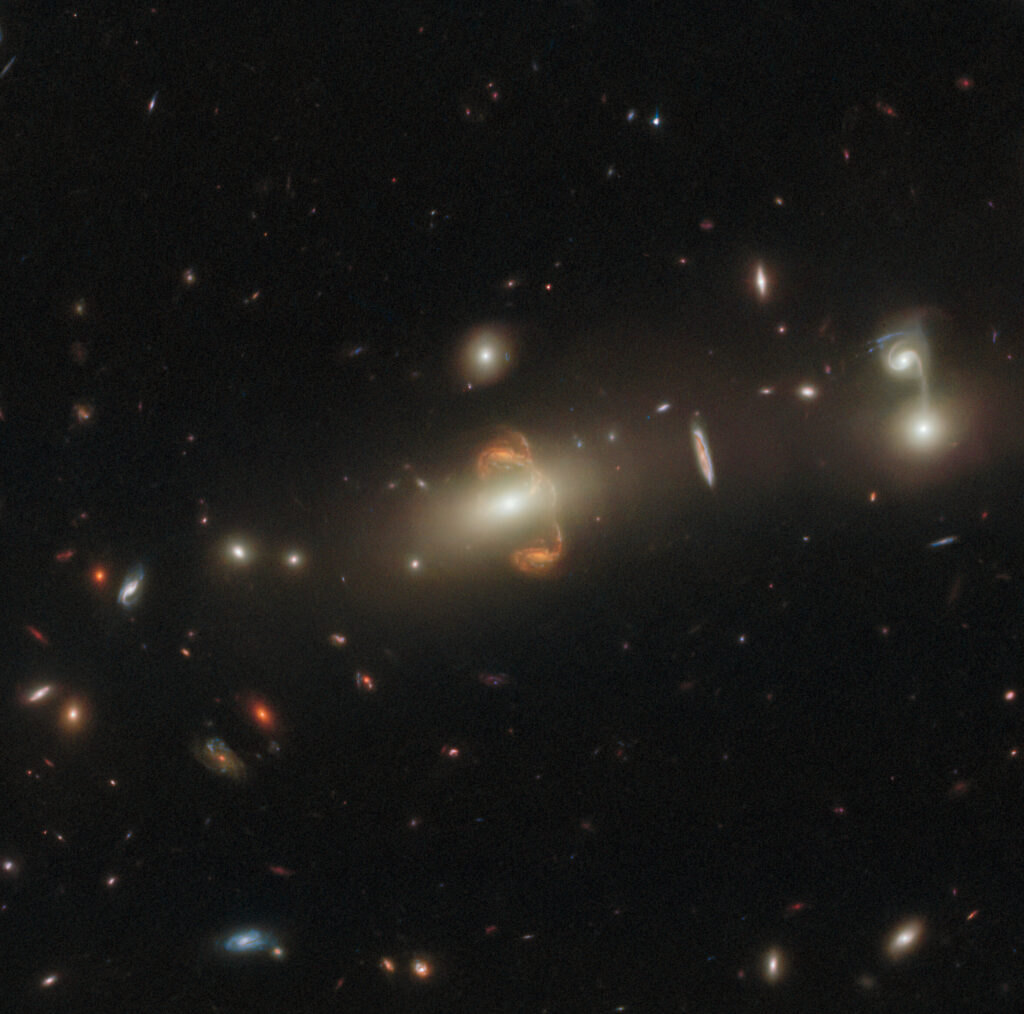The presented photo of the Hubble telescope demonstrates a very curious optical phenomenon: a gravitational lens created by a galactic cluster. It “doubled” the image of the distant galaxy SGAS J143845+145407, which can be seen in the center of the frame.

Gravitational lensing occurs when a sufficiently massive celestial body causes a curvature of space-time enough to change the direction of light rays from a more distant background object — as if they passed through a lens. Accordingly, the body causing the curvature of light is called a lens, and the distorted background object is called “lensed”.
Gravitational lensing can lead to a number of different optical effects. For example, as in the case of the presented image, duplicate the image of a distant background galaxy. It can also turn its image into a distorted arc or ring. Another important consequence is the amplification of light, allowing astronomers to observe objects that would otherwise be too far away or too faint to be seen even with the most powerful of modern telescopes.
That is why astronomers pay so much attention to the search for gravitational lenses.After all, they act as natural telescopes, giving researchers the opportunity to literally look at the edge of the Universe and see the very first galaxies and clusters of stars formed immediately after the Big Bang
Earlier we talked about how Hubble photographed turquoise seas in the Large Magellanic Cloud.
According to https://esahubble.org
Follow us on Twitter to get the most interesting space news in time
https://twitter.com/ust_magazine

